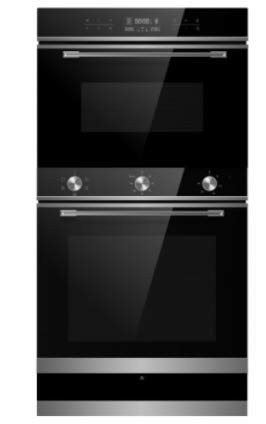Understanding Hobs and Ovens: The Essential Kitchen Appliances
In the realm of kitchen appliances, couple of products are as necessary as hobs and ovens. These home appliances form the foundation of culinary activities, making it possible for individuals to produce whatever from basic meals to elaborate feasts. Understanding the distinctions, types, and performances of hobs and ovens can significantly boost one's cooking experience. This article digs into the intricacies of hobs and ovens, supplying insights that accommodate both newbie and experienced cooks.
What Is a Hob?
A hob, typically described as a cooktop or range top, is the flat surface area on which pots and pans are placed for cooking. Hobs are equipped with heating elements that create the needed heat for cooking food. They are available in numerous kinds, consisting of gas, electric, induction, and ceramic options. Each type uses distinct advantages and drawbacks.
Kinds of Hobs
Gas Hobs:
- Heat Source: Natural gas or propane.
- Advantages: Instant heat control and responsiveness, preferred by numerous chefs for exact cooking.
- Downsides: Requires a gas connection and can be less energy-efficient.
Electric Hobs:
- Heat Source: Electric coils or smooth glass-ceramic surface areas.
- Advantages: Generally much easier to clean, even heating, and widely readily available.
- Drawbacks: Slower to heat up and cool off compared to gas.
Induction Hobs:
- Heat Source: Electromagnetic currents.
- Benefits: Quick heating, energy-efficient, and just warms the pots and pans, not the surrounding surface.
- Downsides: Requires suitable cookware (ferrous materials).
Ceramic Hobs:
- Heat Source: Electric and has a smooth glass surface area.
- Advantages: Sleek look, easy to clean, and even heating.
- Disadvantages: Can take longer to heat up and cool off.
What Is an Oven?
An oven is an enclosed device that cooks food by surrounding it with dry heat. Ovens can be standalone units or combined with hobs in a single home appliance referred to as a variety. Ovens are versatile tools that can be used for baking, roasting, broiling, and more.
Types of Ovens
Conventional Ovens:
- Heat Source: Electric or gas.
- Advantages: Good for standard baking and roasting.
- Drawbacks: Can have unequal heat distribution.
Convection Ovens:
- Heat Source: Electric or gas with a fan for circulating air.
- Advantages: More even cooking and quicker cooking times due to air flow.
- Drawbacks: Can be more expensive and might require adjustments in cooking times.
Microwave Ovens:
- Heat Source: Microwaves.
- Advantages: Quick cooking and reheating; terrific for thawing.
- Disadvantages: Can not brown or crisp food well.
Steam Ovens:
- Heat Source: Steam generation.
- Advantages: Retains nutrients and moisture in food, much healthier cooking alternative.
- Drawbacks: Longer cooking times and generally higher expense.
Secret Differences Between Hobs and Ovens
While hobs and ovens serve the main function of cooking food, their functionalities and uses vary substantially. The following table sums up these essential distinctions:
| Feature | Hob | Oven |
|---|---|---|
| Cooking Method | Direct heat | Enclosed heat |
| Main Use | Boiling, sautéing, frying | Baking, roasting |
| Heat Source | Gas, electric, induction | Gas, electric, steam |
| Cooking Area | Flat surface | Enclosed area |
| Cooking Time | Generally much faster | Varies based upon meal |
| Control & & Precision | Immediate and direct | Count on settings and timers |
Benefits of Using Hobs and Ovens Together
Integrating the use of a hob and an oven can greatly improve the cooking procedure. Here are some advantages:
- Versatility: Different kinds of food can be prepared at the same time.
- Performance: Using both enables for numerous cooking techniques, such as searing on the hob and baking in the oven.
- Time-Saving: Multi-tasking can substantially reduce general cooking time.
Upkeep and Care
To guarantee the durability of hobs and ovens, regular upkeep is essential. Here are some ideas:
For Hobs:
- Clean spills instantly to avoid staining.
- Use suitable cleaners for particular materials (e.g., ceramic cleaner for glass-ceramic hobs).
- Regularly examine gas connections for leakages (for gas hobs).
For Ovens:
- Wipe down the interior after each usage to avoid build-up.
- Usage self-cleaning features if readily available, or apply oven cleaners for tough stains.
- Frequently examine seals and gaskets for wear and tear (to keep heat effectiveness).
FAQs About Hobs and Ovens
1. What is the very best kind of hob for a novice cook?
Answer: A ceramic or electric hob is often suggested for novices due to reduce of use and cleaning.
2. Can I utilize any cookware on an induction hob?
Answer: No, induction hobs require pots and pans made from magnetic products (e.g., cast iron or stainless steel).
3. How typically should Hobs And Ovens clean my oven?
Answer: It is advisable to clean your oven every couple of months, or more frequently if you use it frequently.
4. Is it much better to bake in a convection oven?
Response: Yes, convection ovens are frequently much better for baking as they offer even heat circulation. However, some delicate recipes might take advantage of traditional ovens.
Understanding the performance and differences in between hobs and ovens is important for any cooking enthusiast. Whether one chooses the instant heat of a gas hob or the accuracy of an induction cooktop, each type uses distinct benefits. Likewise, ovens differ extensively in function, from conventional baking to steam cooking. By appreciating these home appliances' functions in cooking, cooks can enhance their cooking skills and improve their kitchen activities.

